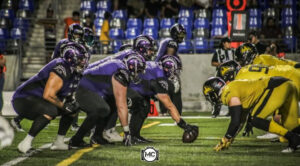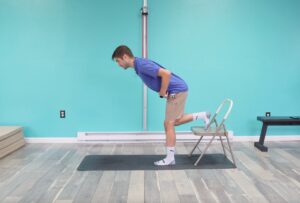Every NFL season, it happens. A running back gets into his later 20’s, and boom—he’s “lost a step.” Fans say he’s washed and fantasy owners panic. But why does this happen and at what age do running backs decline? Are the late 20’s some kind of running back curse?
Nope. It’s not voodoo. It’s science.
There are real, measurable reasons why most NFL running backs decline around age 28. It’s not just wear and tear (though that doesn’t help). It’s about what happens inside the body—on a cellular and neurological level.
Welcome to our series where we’re breaking down the top 9 reasons of why running backs decline. We’re talking muscle, brain, nerves, and everything in between. Here’s your intro playbook:
9 Reasons Running Backs Decline
1. Muscle Fiber Type
We have fast-twitch and slow-twitch muscle fibers. The explosive fast-twitch kind? They start to fade with age.
2. Neuromuscular Efficiency
This is how well your brain talks to your muscles.
3. Rate of Force Development (RFD)
RFD is how fast you can generate power. Sprinting, cutting, breaking tackles—all rely on this.
4. Muscle Cross-Sectional Area
Your muscles don’t just shrink—they lose density and structure. Even if you still look strong.
5. Tendon Stiffness and Elasticity
Tendons store and release energy like springs. Aging tendons? Less spring, more wiggly bananas.
6. Inter/Intra Muscular Coordination
This is about how well muscles work with each other and within themselves. Coordination = efficiency.
7. Joint Mobility and Stability
Injuries happen. Joints stiffen. Stability declines. And that leads to compensations—and injuries.
8. Cognitive-Muscular Communication
Your reaction time slows. That split-second delay? It matters in a league where inches make plays.
9. Energy System Aptitude
Your body’s ATP-PC system gives you those short bursts of power. What happens to it as you get older?
Check out our Series Intro Video:
So What Can You Expect?
We have a lot of information to share and want to make sure we do it justice. We will be deep diving into these topics to not only help you understand a running back’s prefomance but also your own.
These are the real reasons running backs aren’t the same after 28. It’s not a mindset thing. It’s a systems thing. Whether you’re an NFL vet, a weekend warrior, or just want to keep moving well—this info matters.
Stick with us. The science of staying sharp starts now.
Tackles Cause More Than 75% of This Common NFL Injury!
Studies show that the most common knee injury in American Football caused by trauma or contact is….
MDRx Full Body Mobility – 10 Minutes a Day for 4 Weeks
You’re stiff, sore, short on time—and your body’s starting to feel it.
We get it. You train hard. You sit too long. You’re juggling workouts, recovery, and life.
But the truth is, mobility isn’t optional—especially if you want to keep doing what you love.
Most people wait until pain forces them to do something… by then you’re dealing with a full on problem instead of a nagging pain.
BUT….You’re not most people.
You’re proactive. You just need a simple, smart way to move better.
That’s where the MDRx Full Body 10-Minute Mobility Program comes in.
Designed by doctors of physical therapy who train like athletes themselves, this 4-week plan gets straight to what works.
This program is:
✅ Just 10 minutes a day
✅ 4 weeks of guided full-body mobility
✅ Warm-up, recovery, and joint-specific sessions
✅ Built for real people with real goals—not just stretching for the sake of stretching
👉 Grab the MDRx Full Body Mobility Program now and feel the difference in 10 minutes a day.
Not sure if it’s right for you? DM us your goals—we’ll help you build the right routine.
Move better. Train smarter. Stay pain-free.
Because you’re not average—and your recovery shouldn’t be either.





